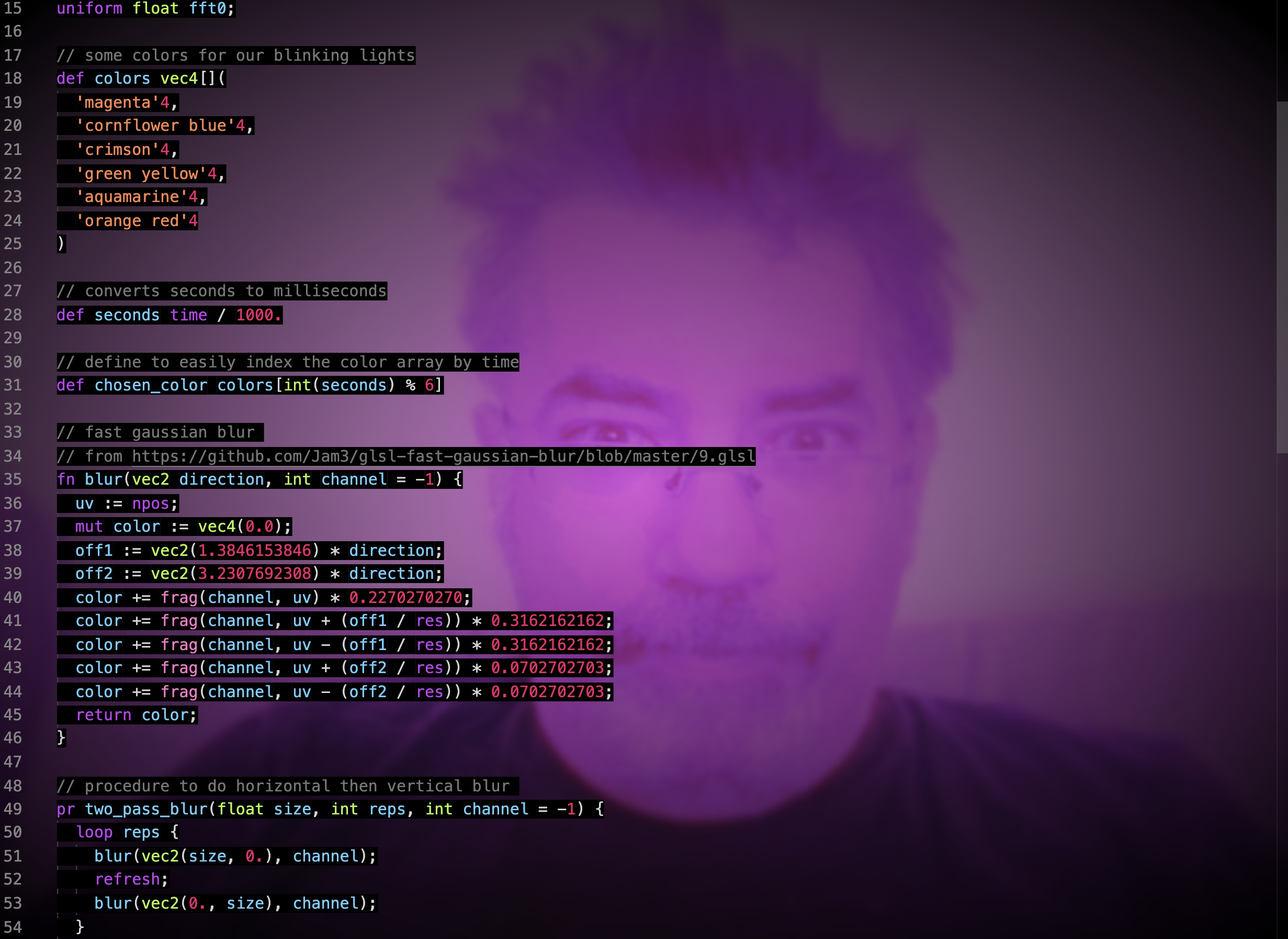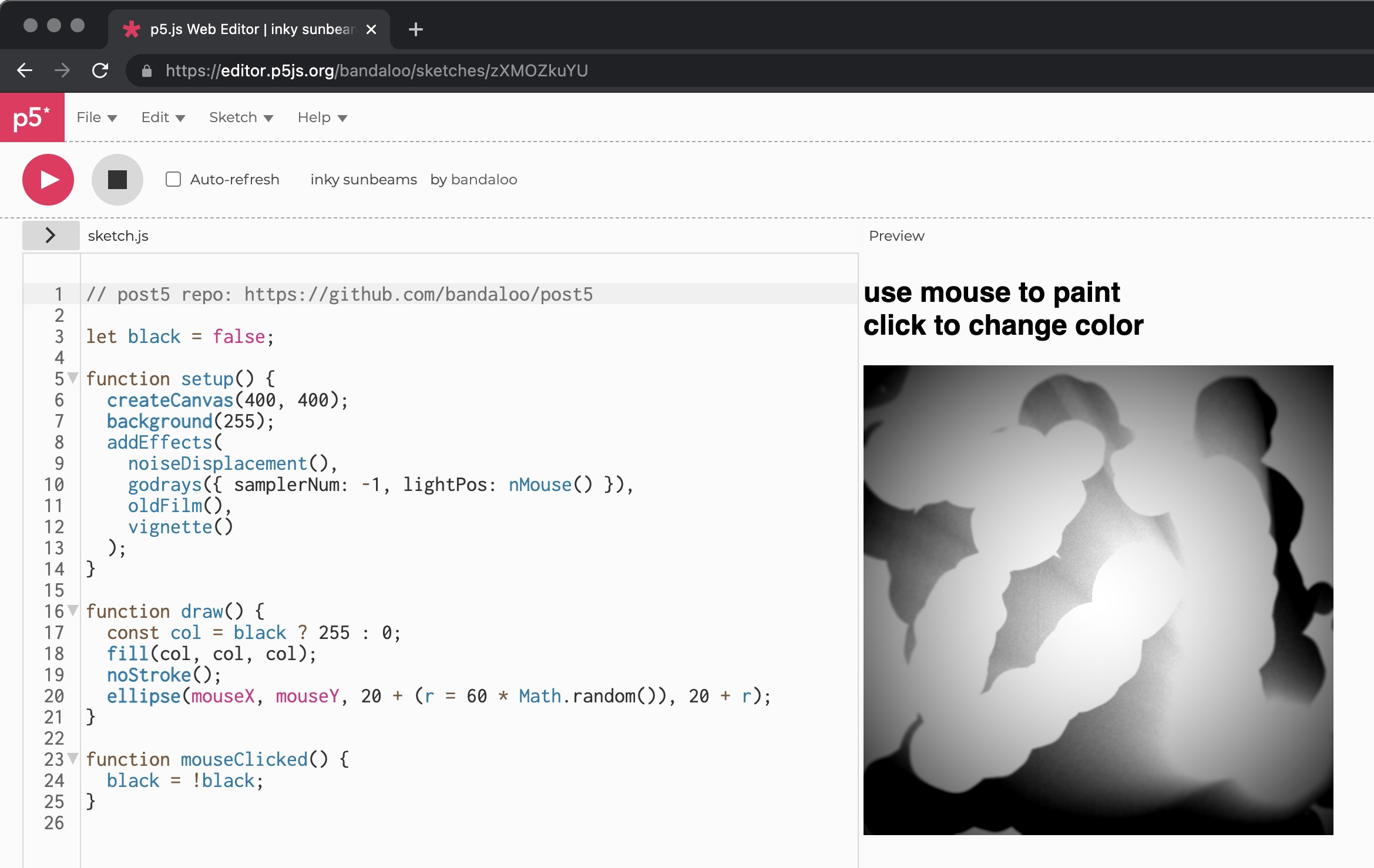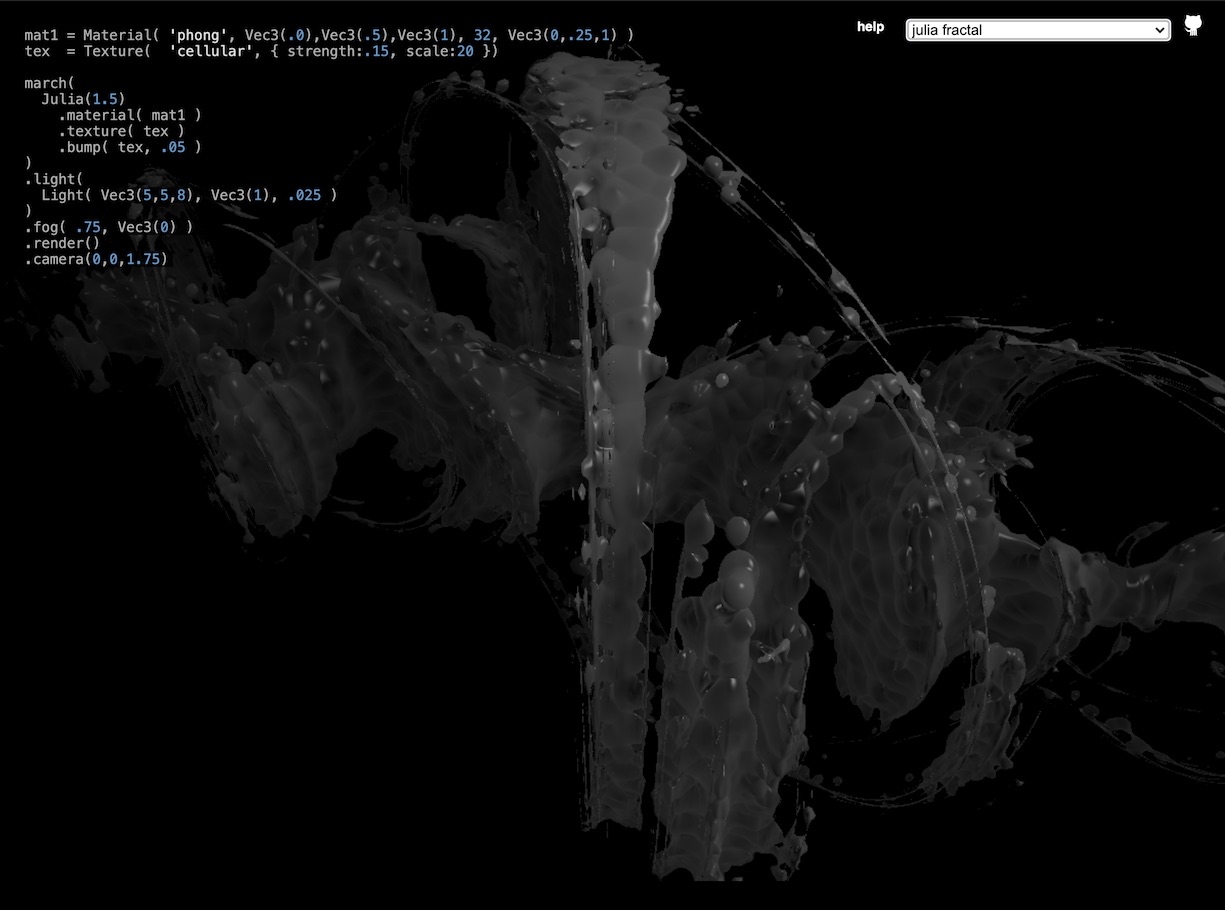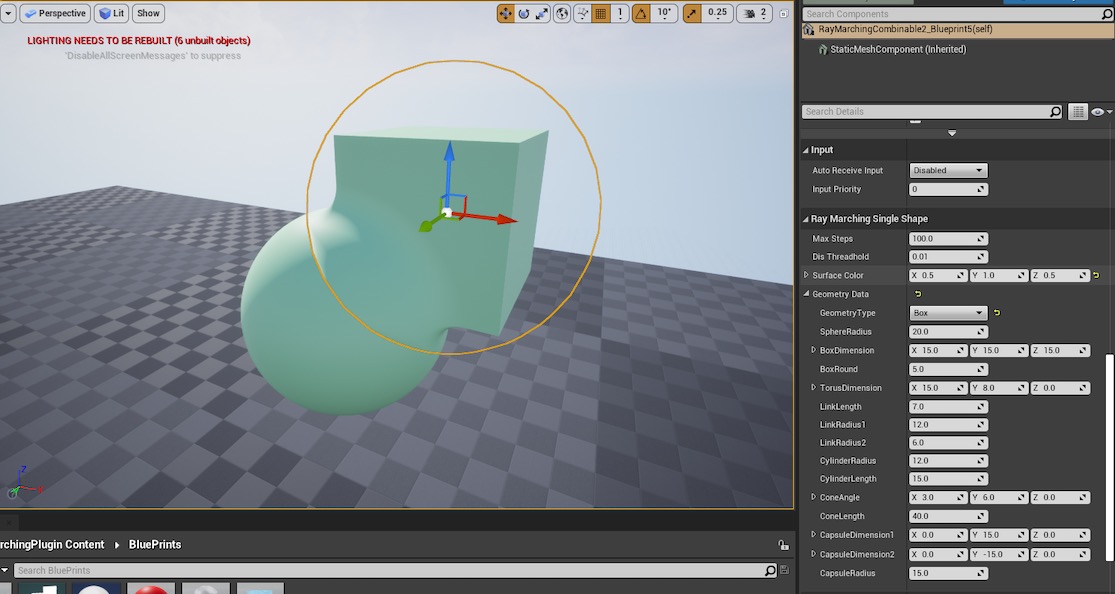Barbara, an environment for authoring graphics programming languages, by Kit
Zellerbach
Code /
Playground
PresentationBarbara is a system for creating bespoke programming languages generating geometric patterns. Inspired by algorithmic quilting patterns, Barbara helps users construct languages that mimic real-world quilting procedures which can be used for both live coding performance or digital quilt recreation. Users create languages and patterns in Barbara’s online coding environment with the Parsing Expression Grammar language formalism; the resulting patterns can be freely shared, remixed, and combined into new quilts.

gibber, an live coding environment for audiovisual performance, by Charlie Roberts
Code /
Playground
gibber is a browser-based live coding environment, featuring custom music and graphics libraries, features for collaborative networked performance, and a research focus on annotating source code with dynamic visualizations provide meaningful visual feedback to on algorithmic processes to performers and audiences.
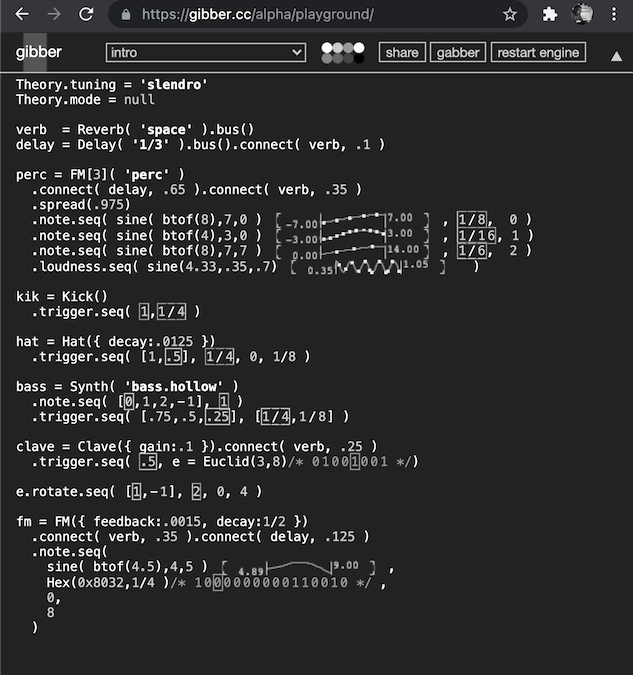
Meng, a live coding environment and mini-language for VR, that priveleges speech and gestural control over typing. Created by
Chunzhen Jiang,
Jian Liu, and Kai Yan.
Code /
Video /
Masters Project Documentation
Meng is a live coding environment authored in Unreal Engine 4 that enables users to create and control agents in a virtual world. While many VR programming environments focus on using "virtual keyboards" for programming, Meng eschews this in favor of a language that combines spoken command with gestures, along with a graphic user interface providing instructions and additional controls. The graphics in Meng are a relatively unique combination of traditional mesh geometries combined with ray marched signed distance functions, enabling realtime constructive solid geometry, morphing, and blending. The UE4 ray marching library, a UE4 GPGPU flocking library, and the UE4 speech recognition library used in this project were all authored by members of the REPL lab who worked on Meng.

